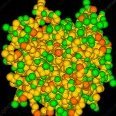Merely reporting the weather in my area.....
-
Recently Browsing 0 members
- No registered users viewing this page.
-
Topics
-
Popular Contributors
-
Latest posts...
-
128
Why isnt Trumps approval rating 80%?
Are there bigger dem donkeys than this refried freak muppet .....Schumer, such a pathetic woke wuss. The way things are headed, Trumps approval will be 80 points higher than dems crashing approvals. Sucks to be a liberal loser these days. -
11
Report Thai Man Jailed in Singapore for Bribery After Public Urination
Where my wife works in Chiang Mai people constantly park on the side of the road and piss on the wall. This is a pretty major road too. People clearly don't seem to think there's any problem with this. -
117
Three U.S. ex-presidents denounce the current one in a two-week stretch
US still had reliable friends that were not dictators. -
11
Report Thai Man Jailed in Singapore for Bribery After Public Urination
I don't agree. Not a massive fan of Singapore but there is excellent public toilet availability. There are toilets in every single MRT station, every hawker centre, bus stations, most parks, all shopping malls. I don't think you can ever be far away from one in Singapore. -
48
Weathering the Climate Debate: Meet the Young Meteorologist Challenging the Hysteria
When was the last time anyone successfully told China what to do? The answer will put your view in perspective. -
33
Putin didn’t budge in Ukraine peace talks. Now Donald Trump may be forced to act
My crystal balls are seeing some Taurus missile strikes which Putin will probably not ignore but at the same time continue consolidating his territorial gains. Do your crystal balls predict NATO troops on the ground repelling the "Orks" from all of mother Ukraine ?
-
-
Popular in The Pub
-








.thumb.jpeg.d2d19a66404642fd9ff62d6262fd153e.jpeg)




Recommended Posts
Create an account or sign in to comment
You need to be a member in order to leave a comment
Create an account
Sign up for a new account in our community. It's easy!
Register a new accountSign in
Already have an account? Sign in here.
Sign In Now